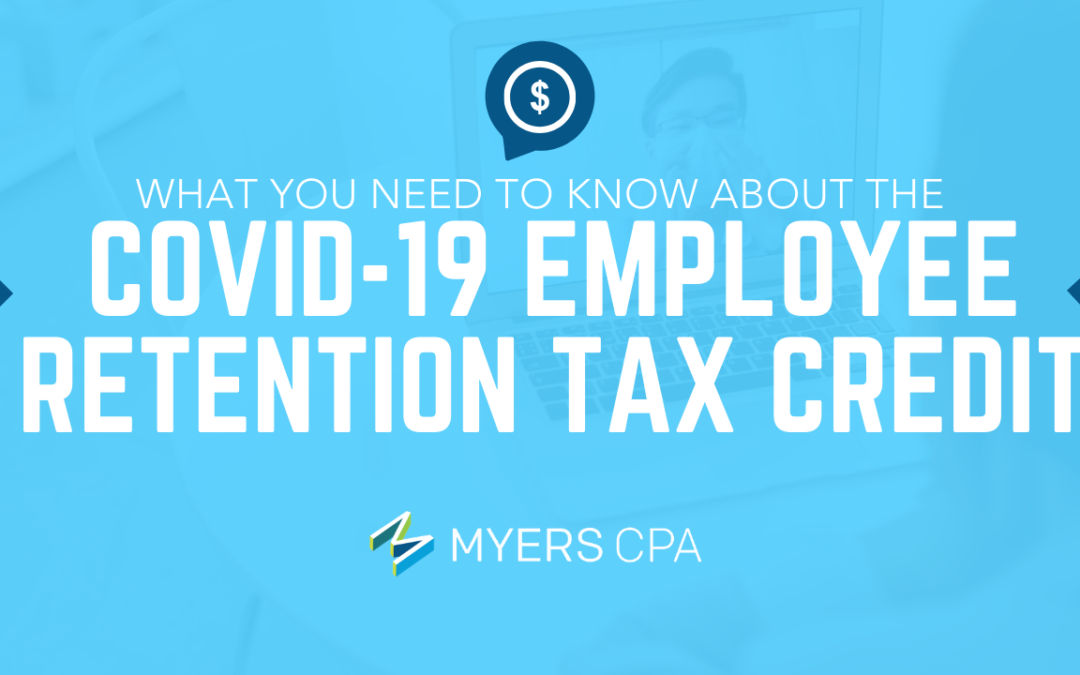The coronavirus has had devastating effects on small businesses across the country. To help reduce the impact, congress created a number of coronavirus payroll tax credits aimed at helping employers with less than 500 employees keep more of their staff working. One of the most impactful of these is the Employee Retention Credit (ERC).
What are tax credits?
Often, when a business does payroll, there is a portion automatically set aside for each of the various federal, state and local taxes. Think of it like an escrow with your accountant or payroll service. The Employee Retention Credit lets you keep some of the money allocated to paying the federal portion of your taxes. If the amount you receive in tax credits is more than the amount of taxes that you’re required to pay, you can get a check in the mail for the difference (assuming you fill out all of the right forms).
What is the COVID-19 Employee Retention Credit?
Commonly referred to as ERC, the Employee Retention Credit is a CARES Act relief measure for small and mid-sized businesses that gives eligible employers who are able to keep employees on payroll a fully refundable tax credit.
What are the benefits?
The ECR credit applies against the Social Security, Medicare, and health insurance tax contributions for the employer and employee. The tax credit can be up to 70% of qualified wages up to $10,000 per employee, per calendar quarter. This means the maximum credit per employee is $7,000 per quarter, or $14,000 total per employee. The program runs through June 30, 2021 which means there are two quarters of eligibility.
There is no longer a 30-day wage limitation, so employers may, for example, claim the credit for bonus pay to essential workers. Additionally, group health plan expenses can be considered qualified wages even when no other wages are paid to the employee.
How do you know if you are eligible?
For 2021, a company with under 500 full time employees (up from 100 employees in 2020) may take advantage of the payroll tax credit. Those with less than 500 employees may apply the tax credit at 70 percent of average quarterly payroll, while those businesses with more than 500 employees may only claim the credits for wages paid to an employee while the employee is not performing their standard role (undergoing paid leave for example).
There are several exceptions to this however. One such is if an essential business’ suppliers are unable to produce key elements, provide key services, or make product deliveries, due to the government orders. Another important exception is if a government order requires an employer to reduce operating hours, that could very well qualify as undergoing a partial suspension of operations, and therefore qualify.
An employer whose business operations are fully or partially suspended must be subject to a government order which limits commerce, travel or group meetings due to COVID-19. “Government orders” include proclamations, orders, mandates, and decrees from a local, state, or federal government that has direct jurisdiction over the businesses operations. This also includes:
- Resident curfews that impact the operating hours
- State emergency proclamations, and shelter-in-place orders
- Mayoral orders for non-essential businesses to close
OR
The employer must have experienced a significant decline in gross receipts of more than 20% for that timeframe year-over-year, as a result of the coronavirus.
It should be noted that a business that is not subject to a restrictive government order, but still voluntarily suspends operations or reduces hours would not be eligible for the credit.
Section 501(c) tax-exempt organizations may be eligible for the ERC, while federal, state, and local governments are not eligible for the credit.
Self-employed individuals may not be eligible for the credit with respect to their own self-employed income, but qualified wages paid by the self-employed individual to their employees may be eligible. For more eligibility information, feel free to contact Myers CPA so that we may provide additional information relevant to your business.
Can you qualify if you received PPP?
Unlike the original program, beginning January 1, 2021 those receiving Paycheck Protection Program loans may still qualify for the ERC for wages that are not paid for with forgiven PPP loan money. Depending on the details of your unique situation, if you previously received a PPP loan, you may now be able to retroactively apply the ERC credits.
Payroll taxes can be a significant expense for small and mid-sized businesses, which is a primary reason why congress wanted to ease the burden as a way of incentivizing businesses to keep their staff employed. With there being so many important details, it is always important to consult a professional with any questions you may have. Feel free to contact us for any clarifications or questions about special cases.
Myers CPA acts as a fractional CFO/outsourced accounting firm, so you can focus on your business, while we focus on the finances.

